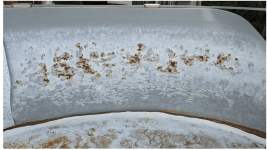Hi Folks,
Replacing our old AGP and because we heat it and evening temps can dip down; I'm thinking about double insulating the walls.
The old pool wall had a single layer of wall foam. Curious if anyone has tried to do a double layer? Or if there is some thicker versions out there that have a better R Value?
I cover the pool with a solar blanket to minimize heat loss; but sometimes the evening temps dip down enough that the heater is working overtime to maintain pool temp. So thus the investigation of either thicker wall foam or double layering it.
Thanks,
-J
Replacing our old AGP and because we heat it and evening temps can dip down; I'm thinking about double insulating the walls.
The old pool wall had a single layer of wall foam. Curious if anyone has tried to do a double layer? Or if there is some thicker versions out there that have a better R Value?
I cover the pool with a solar blanket to minimize heat loss; but sometimes the evening temps dip down enough that the heater is working overtime to maintain pool temp. So thus the investigation of either thicker wall foam or double layering it.
Thanks,
-J


